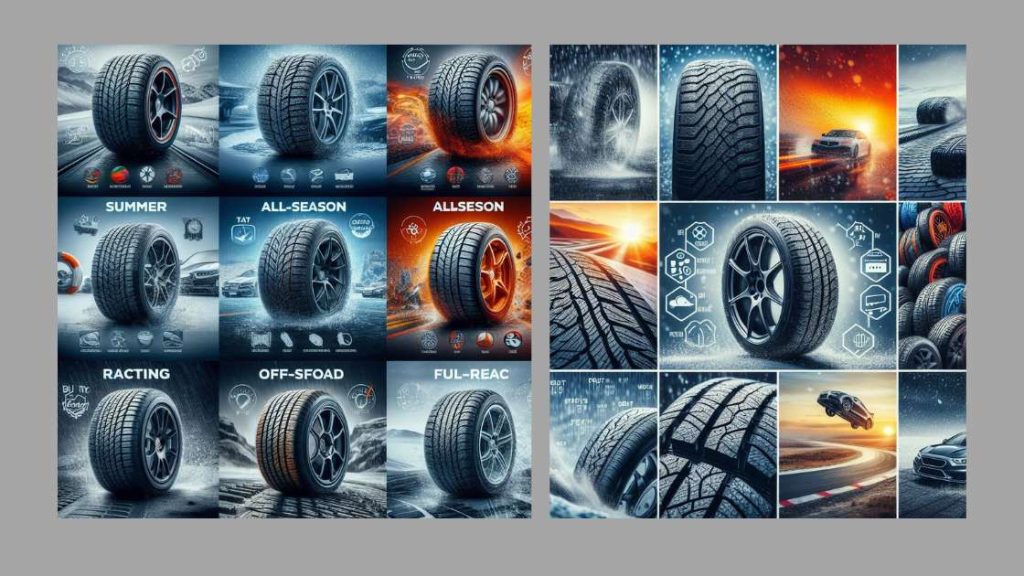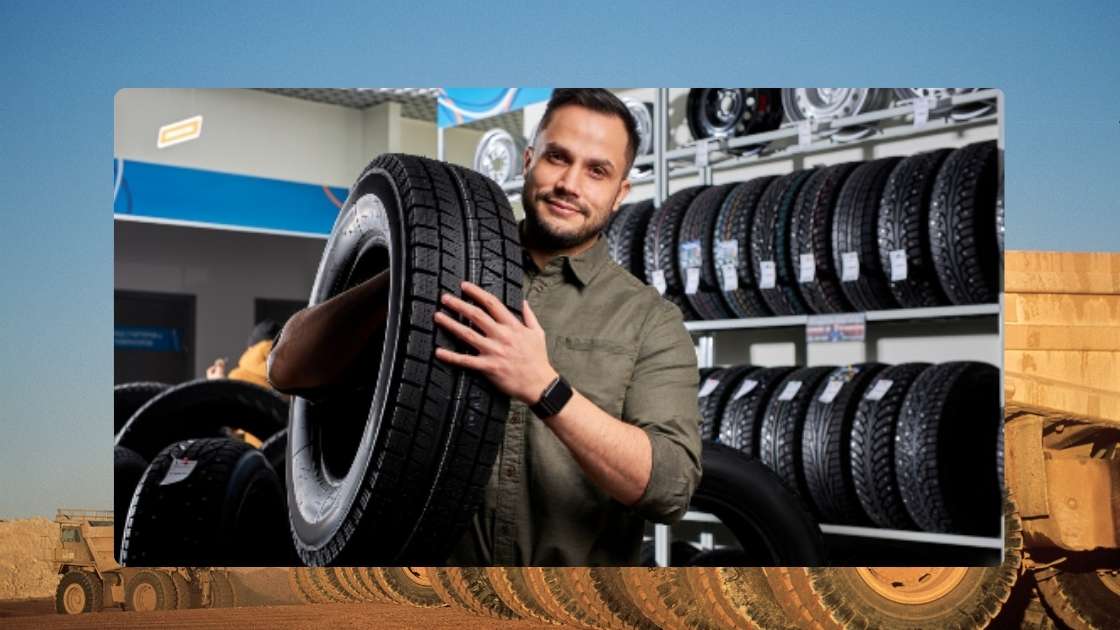Tire quality often hinges on traction, durability, and performance. Better tires provide superior grip, longer life, and consistent handling.
Selecting the right tire is crucial for ensuring your vehicle’s performance and safety. The superiority of one tire over another is determined by its composition, tread pattern, and intended usage.
High-quality tires are designed with advanced rubber compounds and reinforced sidewalls which contribute to enhanced road stability and longevity.
Tire manufacturers invest in extensive R&D to create tires that excel in specific conditions, whether for wet weather performance, off-road ruggedness, fuel efficiency, or comfort.
A well-rounded tire delivers not only the grip needed during acceleration and braking but also the resilience to withstand diverse temperatures and road conditions.
Careful consideration of these factors will ensure you choose tires that meet the demands of your driving habits and the environments you encounter.
Let’s explain “What Makes One Tire Better Than Another?”
Table Of Contents
- 1 The Importance Of Choosing The Right Tire
- 2 Materials Matter: Rubber Compounds And Durability
- 3 Tread Design: The Grip Story
- 4 Tire Structure: More Than Meets The Eye
- 5 Performance On Various Terrains
- 6 Resistance And Efficiency
- 7 Lifespan And Wear Indicators
- 8 Environmental And Technological Advancements
- 9 Conclusion
The Importance Of Choosing The Right Tire
Selecting the right tire is critical for both vehicle performance and passenger safety. Tires are the only point of contact between your vehicle and the road. This makes their role vital in handling, comfort, and fuel efficiency.
A good tire can enhance the driving experience, while a poor choice may lead to grip issues and increased stopping distances.
Factors Contributing To Tire Performance
- Tread Pattern: Determines grip and water evacuation.
- Rubber Compound: Affects tire wear and traction.
- Tire Construction: Influences strength, durability, and comfort.
Tire technology varies across types and brands. Some tires are made for speed while others for durability or off-road use. Identify your driving needs to guide your selection.
Safety Implications Of Tire Selection
Tire choice can directly affect safety. Tires with optimal tread and appropriate pressure ensure better vehicle control. This reduces the risks of accidents in wet and slippery conditions.
Tires with the right specifications for your vehicle support effective braking, sharp handling, and a stable ride.
| Feature | Function | Impact |
|---|---|---|
| Tread Depth | Water clearance | Prevents hydroplaning |
| Tire Pressure | Maintains shape | Optimizes contact with the road |
| Tire Age | Material integrity | Avoids tire failure |
Materials Matter: Rubber Compounds And Durability

When selecting tires for a vehicle, the type of rubber and material composition used in the tire’s construction plays a critical role in its performance and longevity. Tires crafted with premium materials offer better road grip, higher tolerance to varying temperatures, and enhanced durability.
Let’s delve into the nitty-gritty of rubber compounds and why some tires outlast others.
Synthetic Vs. Natural Rubber
The debate of synthetic versus natural rubber in tire manufacturing is a hot topic. Both have unique benefits:
- Natural rubber: Excellent for flexibility and grip.
- Synthetic rubber: Superior in durability and weather resistance.
Most tires are made from a blend of both, optimizing the strengths of each.
Additives And Their Role In Longevity
It’s not just the rubber type that counts. Additives play a vital part in tire endurance.
| Additive | Function |
|---|---|
| Carbon Black | Increases strength and longevity |
| Silica | Improves grip on wet surfaces |
| Antioxidants | Slows down wear and tear |
Additives help tires resist damage from UV rays, ozone, and heat, directly impacting their usable life.
Tread Design: The Grip Story
The story of tire traction unfolds in the grooves and patterns of the tread design. This is where the rubber meets the road, quite literally.
Tread design plays a significant role in how tires grip on various surfaces, affecting safety and performance.
Let’s delve into how different elements of tread design contribute to tire superiority on the road.
Patterns And Water Displacement
Tire tread patterns are not just for show. They serve a purpose much greater than their aesthetic appeal. Patterns vary from zigzags and blocks to grooves and sipes.
These designs are the tire’s weapons against hydroplaning, allowing cars to maintain contact with wet roads.
- Channeling Water: Deep grooves in tread patterns help to channel water away from the tire.
- Increase Surface Area: More edges from intricate patterns increase the surface area in contact with the road.
- Preventing Slip: Specific designs, like circumferential grooves, prevent sliding by reducing water buildup.
Tread Depth And Its Effects On Traction
As tires wear down, tread depth decreases, affecting their ability to grip the road, especially in adverse conditions. New tires with deep grooves can handle more water and debris, providing better traction.
| Tread Depth | Effect on Traction |
|---|---|
| Deep Tread | Optimal water displacement for superior grip |
| Shallow Tread | Reduced capacity to handle water, leading to potential hydroplaning |
- A shallow tread compromises the tire’s ability to evacuate water from under the tire.
- Deep tread ensures the car remains stable and responsive, even on wet roads.
- Regular checking of tread depth can prevent accidents and improve performance.

Credit: tireparticles.info
Tire Structure: More Than Meets The Eye
Ever glanced at a tire and thought, “It’s just rubber, right?” Think again. A tire’s structure defines its performance, longevity, and your vehicle’s overall safety. This section peels back those layers to reveal the complexities hidden within.
Radial Vs. Bias-ply
The battle of tire types begins with understanding the internal framework. Radial and bias-ply tires differ markedly in construction and performance.
- Radial tires boast a design where the tire cords run perpendicular to the direction of travel.
- Bias-ply tires feature cords that crisscross diagonally, creating a robust, yet less flexible body.
The winner? Radial tires, for most instances, due to their better handling and fuel efficiency.
Belt Construction And Stability
Beneath their surface, tires hide an intricate belt system that is pivotal for road grip and stability.
| Belt Material | Impact on Tire |
|---|---|
| Steel | Enhances durability and puncture resistance |
| Kevlar | Lightweight and aids in reducing road vibrations |
Tires with multiple belt layers offer greater stability at high speeds, ensuring a safer ride for everyone.
Performance On Various Terrains
When choosing tires, terrain performance changes the game. Different surfaces demand unique tire features for peak performance. Understand your driving needs to pick the perfect tire.
Let’s delve into the specific qualities that make a tire shine on different terrains.
All-season Vs. Specialty Tires
All-season tires offer balanced performance in varied conditions. They work well on dry and wet roads. Yet, specialty tires are crafted for specific weather or road types. They maximize safety and efficiency.
- Solid grip on wet roads – All-season tires.
- Improved traction in hot climates – Summer tires.
- Resistance to cold – Winter tires grip ice and snow.
Off-road Abilities: Mud And Snow Tires
Mud tires have deep treads for muddy terrains. Snow tires wield fine siping for slushy roads. Both types provide enhanced traction when it’s needed most.
| Tire Type | Terrain | Feature |
|---|---|---|
| Mud Tires | Muddy | Deep, aggressive treads |
| Snow Tires | Snowy | High sipe density |
Choose mud tires for off-road adventures. Opt for snow tires for winter wonderlands. Reliable performance awaits with the right choice.
Resistance And Efficiency
From smooth highways to rough trails, tires face lots of challenges. The right tire can make your ride safer and cheaper. Let’s look at how resistance and efficiency matter.
Rolling Resistance And Fuel Economy
Rolling resistance is how much energy your car needs to move the tire along the road. A lower rolling resistance means your car doesn’t work as hard, saving you fuel.
This is key for better fuel economy. Here’s what affects rolling resistance:
- Tire composition: Materials like silica reduce resistance.
- Tread design: Fine-tuned patterns offer less friction
- Inflation level: Properly inflated tires roll more easily.
Heat Build-up And High-speed Performance
Tires get hot at high speeds. Too much heat leads to wear and tear. Good tires manage heat better. They stay safer at faster speeds. Here’s what makes a tire stand out in high-speed conditions:
- Heat-resistant materials: Some rubbers handle heat well.
- Advanced construction: Better build keeps tires cool.
- Airflow design: Certain patterns help air circulate.
Lifespan And Wear Indicators
Understanding the lifespan and wear indicators of tires is crucial for your safety. It can also save you money. Tires are not just round and black; they are complex.
Their design and materials impact how long they last. They also come with features that show when it’s time to replace them.
Manufacturing Date And Wear Bars
The manufacturing date tells how fresh a tire is. Tires have a sell-by date, just like food. You can find this date on the sidewall as a four-digit number.
The first two digits are the week, and the last two are the year of manufacture. For example, “2219” means the tire was made in the 22nd week of 2019. Fresh tires mean a longer life.
Wear bars are small bridges that form between your tire’s treads. When these bars are flush with the tire’s tread, it’s time to get new tires.
This is a built-in warning sign that your tire’s lifespan is reaching its end. You should check these regularly. It could mean the difference between a normal drive and an emergency.
Tire Rotations And Even Wear
Tire rotations are key for even wear. By rotating them, you give each tire a turn at different car positions. This prevents one tire from wearing out faster than the others. Ideally, rotate your tires every 5,000 to 8,000 miles.
Even wear helps tires last longer. It makes the ride smoother too. You can check wear by using a penny. Put it head-down in the tread. If you see all of Lincoln’s head, your tread is too worn.
This simple test can tell you if your tires are wearing evenly.
Remember, while it’s not all about looks, the true value of a tire lies beneath its surface. By paying attention to these lifespan and wear indicators, you ensure that your journey is both safe and cost-efficient.
Environmental And Technological Advancements
Understanding tire quality goes beyond grip and longevity. Environmental friendliness and cutting-edge technology now set leading tires apart.
Eco-friendly Tires
Environmental awareness has steered the tire industry towards sustainability. Eco-friendly tires offer a greener ride. Here’s how:
- Low Rolling Resistance: They use less energy to roll, reducing fuel consumption.
- Recycled Materials: Many feature rubber from recycled tires and other sustainable materials.
- Extended Life: Durable designs mean fewer tires are used and discarded over time.
Smart Tires: Sensors And Future Tech
Tire technology is not just about the rubber hitting the road. Smart tires come embedded with sensors. They track and adjust to conditions for optimal safety and performance. Consider these innovations:
- Pressure Monitoring: Sensors alert drivers to low pressure, helping maintain efficiency.
- Tread Wear Indicators: Advanced indicators provide real-time wear data.
- Temperature Adjustments: Sensors can tweak tire characteristics to suit temperature changes.
Future developments promise even more, such as self-repairing materials and integration with autonomous vehicle systems.
Conclusion
Selecting the right tire is vital for your vehicle’s performance and safety. Consider tread patterns, rubber compounds, and seasonal appropriateness. Remember durability and fuel efficiency. Your driving experience hinges on the quality of your tires. Choose wisely for optimal road handling and peace of mind.





